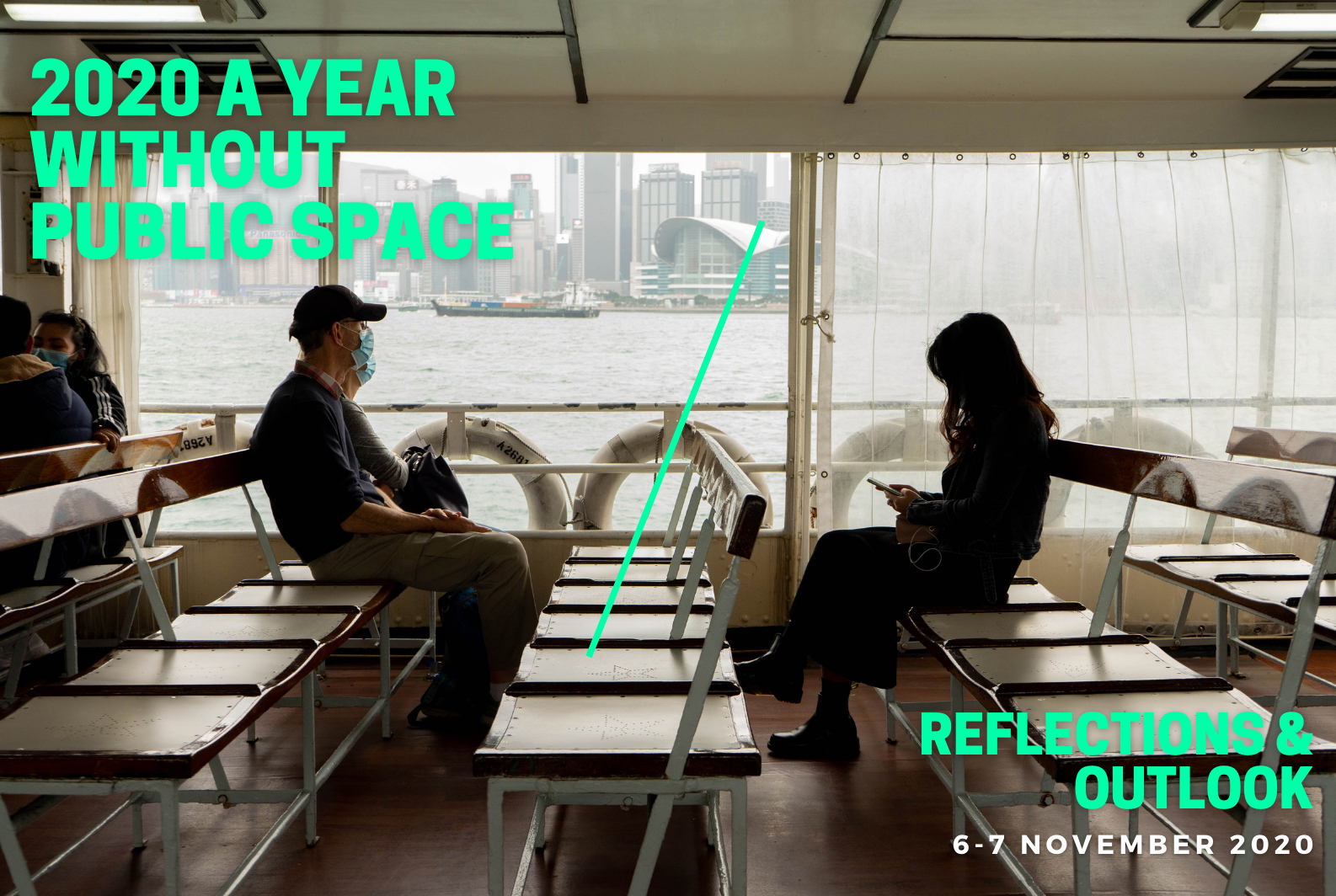How to Design Public Space for Maritime Mindsets? That’s a central question in the new Minor ‘Minor (Re)Imagining Port Cities: Understanding Space, Society, and Culture’.
Tag Archives: public issue
Designing Domestic Places
| Public space is the place to play, move and meet. This applies to our rich city center with all its shops and restaurants, but just as much to residential areas. But how can we make these public spaces even more attractive for all types of users? At the beginning of February, students from TU Delft, The Hague University of Applied Sciences, and Inholland University of Applied Sciences developed various ideas for the public space in the Tanthof district. In various teams, the students have investigated how existing routes or routes to be designed can be provided with ‘stopping points’: places where you can rest for a while, look around and chat with other residents. During this meeting of Delft Design, these design sketches will be briefly explained and we would like to discuss these design sketches with you and, among others, Tako Postma (City Architect of Delft), Eveline Berghout – van der Schee (urban designer, City of Delft), Maurice Harteveld (researcher, Design of Public Spaces, TU Delft), Ben Kuipers (landscape architect) and Flip Krabbendam ( architect) in a discussion about the preconditions for successful public space. The discussion starts with a lecture on Designing Domestic Places by Maurice Harteveld Afterward, there is an opportunity to chat and view the different designs. This while enjoying a snack and drink. The challenge is organized by Delft Design in collaboration with the City Deal Kennis Maken Delft, study association POLIS and architect Flip Krabbendam. | De openbare ruimte is dé plek voor spelen, bewegen én ontmoeten. Dat geldt voor onze rijke binnenstad met al zijn winkels en horeca, maar even zo goed voor woonwijken. Maar hoe kunnen we deze publieke ruimten nog aantrekkelijker maken voor alle type gebruikers? Begin februari hebben studenten van de TU Delft, De Haagse Hogeschool en Hogeschool Inholland verschillende ideeën uitgewerkt voor de openbare ruimte in de wijk Tanthof. In verschillende teams hebben de studenten onderzocht hoe bestaande of nieuw te ontwerpen routes kunnen worden voorzien van ‘halteplaatsen’: plekken waar men even kan uitrusten, kan rondkijken en een praatje kan maken met andere bewoners. Tijdens deze bijeenkomst van Delft Design worden deze ontwerpschetsen kort toegelicht en gaan we graag met u en onder andere Tako Postma (stadsbouwmeester van Delft), Eveline Berghout – van der Schee (stedebouwkundige. City of Delft), Maurice Harteveld (onderzoeker, Design of Public Spaces, TU Delft), Ben Kuipers (landschapsarchitect) en Flip Krabbendam (architect) in gesprek over de randvoorwaarden van succesvolle openbare ruimte. De discussie wordt geopend met een lezing over Het Ontwerpen van Huiselijke Plekken door Maurice Harteveld Na afloop is er gelegenheid tot napraten en het bekijken van de verschillende ontwerpen. Dit onder het genot van een hapje en drankje. De challenge wordt georganiseerd door Delft Design in samenwerking met de City Deal Kennis Maken Delft, studievereniging POLIS en architect Flip Krabbendam. |
The Public Space as Meeting Place
De Openbare Ruimte als Ontmoetingsplek
where:
Prinsenkwartier en online
when:
2 March 2020
open 19.30, start 20.00 untill 22.00
Design Challenge for Students
City Deal ‘Kowlegde Making Delft’ is organising a challenge about the use and design of public space for ambitious students who would like to push their boundaries. How can we make the public space more attractive for all types of users as a place to play, move and to meet?

More: Design Challenge: Public Space as a Meeting Place
Partners:
the Municipality of Delft
The Hague University of Applied Sciences
Inholland University of Applied Sciences
Delft University of Technology
Delft Design
After one Year without Public Space
Wrapping up a challenging year with a final online 2-day symposium ‘2020 A Year Without Public Space: Reflections & Outlook’ to reflect and plan ahead for 2021, particularly in the aspects of Cities & Health, Digital Public Space, Innovative Approaches & Creative Practices, and Campus as Public Space.

2020 passes in a blink. COVID-19 completely changed our world, our work, our school, and our daily life routine. COVID-19 also changed the public space where we for the first time have to stay away with during global lockdown, spaces where we perhaps took for granted for joyous gatherings, block parties, after-school hangouts, parks where we share experiences, exchange a thought, bump into neighbours and colleagues, have become cold spaces for disseminating hygiene items and food supplies, testing cases, or otherwise deserted and fenced off. Yet, at the same time, new spaces emerge, bike lanes, pedestrianized zones, pop-up installations, eateries and street stalls have found their ways in many cities and administrations. Coming to the end of 2020, we feel that now it’s the time to look back, reflect, and plan ahead.
2020: A Year without Public Space under the COVID-19 Pandemic – Reflections & Outlook
International Symposium
6-7 November 2020
register at: www.publicspace-covid19.com
Please be welcome at one of the sessions on Day 1 and Day 2, and particularly to the roundtable discussion and closing remarks.
Continue reading
Ethical and Social Values in COVID-times
Design for Values in Times of COVID19
Creating Responsible Innovations respecting Ethical and Social Values
The COVID-19 pandemic is hitting people and businesses hard. The attempt to protect people from this life-threatening disease has changed how we perceive the role of governments, businesses, and all other stakeholders in providing safe housing, sanitation, workplaces, and safe public space to name a few. These are issues architecture, urban design, and spatial planning must address.
Continue reading
Public Space under COVID-19

TU Delft Joins ‘2020: A Year without Public Space under the COVID-19 Pandemic’
Social distance dictated by COVID-19 health emergency affects access to public space and with it creating a range of impacts on different levels. While global lockdown is destabilizing economy and challenging country leaders, at the human level the pandemic is generating isolation and loneliness, with a significant raise of helplessness and fear. Everyone is asked to stay home and rearrange daily routines and work activities in indoor domestic spaces, looking at the world from behind a window. People are dying alone, numbers are increasingly high. Outdoor physical activities are no longer allowed. Many governments seem to lack proper strategies to manage the risk of massive contagion. In the Global South the poor living in informal settlements have scarce access to water, washing hands could be dangerously impossible.
What is the future of public space? How can we face this unprecedented emergency and get prepared to its consequences, in specific regard to health disparity? Will public space restrictions stay in place after recovering from the pandemic?
Is there something we can do now all, together? Delft University of Technology, a worldwide recognised leader in the field of urban design and public space, unites with more than twenty universities globally in the ‘2020: A Year without Public Space under the COVID-19 Pandemic’ initiative. DDfV researcher Maurice Harteveld explains:
“We observe differences in behaviour in public space under the current circumstances. Differences that relate to different societal and personal priorities based on different social and personal values. Altered patterns in our cities are updating the way human behaviour informs urban design, hence the design of public space, but foremost the emerging differentiation in values effect in the design choices we are making in the near future.”
Democratic, Inclusive, Agential Cities

This article highlights the dynamics of values in our reasoning on public space. By means of an epistemological study, illustrated by examples in the Dutch city of Amsterdam, it tests the contemporary premises underlying our ways to safeguard the inclusive, democratic, agential city, and, as such, it aims to update our view on public space. The article raises three subsequent main questions: [i] Is the city our common house as perceived from the Renaissance onward, containing all, and consequently are public spaces used by the people as a whole? [ii] Is the city formalising our municipal autonomy as emphasised since the Enlightenment, in an anti-egoistic manner, and in this line, are public spaces owned by local governments representing the people? And, [iii] is the city open to our general view as advocated in Modern reasoning, restricting entrepreneurial influences, and synchronically, is its public spaces seen and/or known by everyone? – Inclusiveness, democracy, and agentiality are strongholds in our scientific thinking on public space and each issue echoes through in an aim to keep cities connected and accessible, fair and vital, and open and social. Yet, conflicts appear between generally-accepted definitions and what we see in the city. Primarily based upon confronting philosophy with the Amsterdam case for this matter, the answering of questions generates remarks on this aim. Contemporary Western illuminations on pro-active citizens, participatory societies, and effects of among others global travel, migration, social media and micro-blogging forecast a more differentiated image of public space and surmise to enforce diversification in our value framework in urban theory and praxis.
Read full article online:
Harteveld, Maurice (2019) ‘Reviewing Premises on Public Spaces in Democratic, Inclusive, Agential Cities, illustrated by Amsterdam’, In: The Journal of Public Space, 2019, Volume 4, Number 2, pp. 123-143
The Journal of Public Space is open access, contents are freely accessible under Creative Commons Attribution-NonCommercial 4.0 International License (CC BY NC).
For the full issue: Vol. 4 n. 2 | 2019 | FULL ISSUE
Editors: Maurice Harteveld and Hendrik Tieben
Managing Editor: Luisa Bravo
Publisher: City Space Architecture / UN-Habitat
People, Movement & Public Space
Improving our ways to urbanise and innovate urbanisation processes are needed in order to meet the UN Sustainable Development Goals, hence deliver the Quito New Urban Agenda promise. During the Future Days event, participants renewed the listing of urban topics. They bridge the gaps between academics and practitioner. They have presented much more evidence-based policies at the global level and with local examples and test-beds. And, they generated a better understanding of the driving forces of urbanisation and of the needs for better regulating the processes.

People, Movement and Public Space
In a keynote at the Future Days 2019 event, themed ‘Legacy and Future of our Cities’, I illuminated the interdisciplinary topic ‘people, movement and public space’, in order to understand assembled complexities of cities which go along with this topic. I introduced a four-step approach: First, a network-theoretical approach in the analyses of path systems, aiming to understand the complex dynamic systems of real cities better. Second, the analyses of personal perspectives on these paths apply more a non-linear approach to understand complex trajectories and interactions in reality. Third, engaged with the human-adaptive approach, analysing the psychology of place helps to understand patterns in the evolutionary inter-subjectivity of being in cities. Lastly, by observing public life, understanding the emergence of life in real cities, and non-equilibria, may be understand from a self-organising approach.
Continue reading
Public Space and Inclusive Cities
How do we make public space that is inviting for all? What is public space in open cities? What can we learn from public space abroad? Three interesting lectures to inspire and to take lessons from. Sharing visions on public space at the HUA in Amersfoort.
Continue reading
CSI Urban Space
Given the changing characteristics of public and private urban spaces, the lecture covers a wide range of city-related topics following a two-folded target. As urban space represents the interface of communication and urban investigations, it is crucial to bring participants nearer to the concept of it, including crossing boundaries. The second part of the lecture block will deal with the role of urban planning in shaping urban space following its redefinition. With this insight, participants would understand the role of urban space and the formal ways of planning it.
